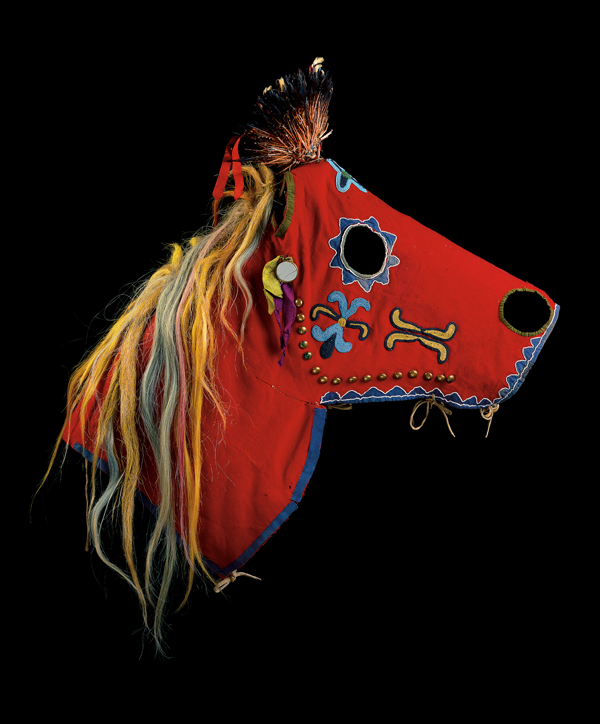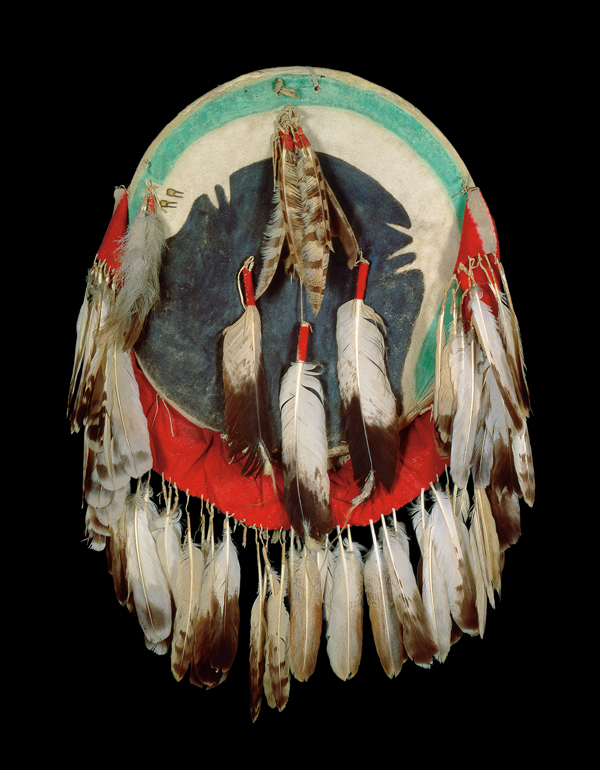The Art of the American Indians: The Thaw Collection is currently on view at the Dallas Museum of Art which features art such as masks, ceramic bowls, jewelry, and clothing. I recently led a gallery talk entitled, Call of the Wild: Animals in the Art of the American Indians that focused on American Indian art that incorporated animals into the design or as the materials to create the work of art. Animals are essential to many American Indian groups because they provided food, clothing, and oftentimes, shelter.
Mimbres Bowls
Bowl With Fish, c. A.D. 1000-1150
United States: New Mexico, Mogollon culture, Mimbres people,
Ceramic; Mimbres Black-on-White type
Foundation for the Arts Collection, anonymous gift
The name Mimbres, which means “willow” in Spanish, was given to a group of people from the Mogollon culture who lived between 150 A.D. to 1450 A.D. The Mimbres people were an egalitarian society and lived in the Northwestern region of New Mexico. The Mimbres people were a very small society with approximately 5,000 members. Their diet consisted of small game meat such as rabbits, turkeys, sheep, and foxes. They are known for creating clay-fired bowls between 1000 A.D. and 1150 A.D. during the peak of the Mimbres culture, known as the “Classic Mimbres Period”. These bowls were first discovered in the early 1900’s and continue to fascinate archaeologists because of their sophisticated design and level of creativity compared to their contemporaries and other ancient societies.
The Mimbres bowls were painted in the interior surface with geometric designs, human figures and/or animals, with a series of bands painted around the rim of the bowl. The designs may have represented scenes from their daily life or connections to the spiritual world. The leaves from a yucca plant were used as a brush to paint black slip on a white background or to paint white slip on a black background. Archaeologists can only speculate as to what these bowls were used for, such as storing food or used in a funerary offering. Many of these bowls have a hole punched out at the bottom. The process of making these holes is often referred to as “killing the bowl”. These particular bowls would have been placed over a deceased person’s head in order to free their spirit. There are approximately 20,000 Mimbres bowls in private collections and museums around the world.
Horse Mask
Horse Mask, ca. 1875-1900
Nez Perce, (Nimi’ipuu) or Cayuse, Idaho, Oregon, or eastern Washington
Trade cloth, blue cloth, cotton lining, thread, glass beads, brass buttons, horsehair, mirror, feathers, silk ribbons, hide, ermine
Fenimore Art Museum, Cooperstown, N.Y
During the 13th through 17th century, the Plains Indians were a semi-nomadic society that traveled, traded and farmed by foot. They lived in the Plains region, which covered about one million square miles of land that covered Texas, Colorado, Kansas, Montana, Nebraska, New Mexico, North Dakota, Oklahoma, South Dakota, Wyoming, and the Canadian provinces of Alberta, Manitoba, and Saskatchewan. The buffalo was their primary source of food and was also used for making clothes, shelter, tools, and weapons. In the 1600’s, the Spaniards introduced horses to the Plains Indians, significantly changing their lifestyle. They became equestrian hunters and used horses in battles. This Horse Mask made of horse hair, ermine, feathers, glass beads, trade cloth, brass buttons, and mirrors would have been placed over the horse’s head to be worn during a prewar processional. A zigzag design symbolizing lightening was stitched around the eyes to represent the Thunderbird, a patron of war who protected the horses and warriors during battle. Mirrors were attached to the mask to reflect sunlight in order to distract their enemies.
Shield
Shield, ca. 1860
Crow, (Apsaalooke), Montana
Buffalo rawhide, antelope skin, trade cloth, eagle and hawk feathers, porcupine quills
Fenimore Art Museum, Cooperstown, N.Y
The Shield was also an important element of protection for Plains warriors riding into battle. However, it wasn’t just the buffalo hide that protected them from arrows and clubs, but also the spiritual power of the image painted on the shield. This image would have been revealed to the warrior in a vision or dream and was believed to have given him protection while in battle. The image on this shield reveals a White Mountain Lion painted beneath a green curved lined line which signifies a magnificent hunter. The Horse Mask and Shield are no longer used in battle; however, they can be seen in many parades and ceremonies held by Plains Indians today.
These American Indian works of art and others can be found in the Dallas Museum of Art collection and the Art of the American Indians: The Thaw Collection, which is currently on view until September 4th
Thanks,
Karen A. Colbert
Teaching Programs Intern


